Southern California’s Mediterranean climate offers mild winters and warm summers, creating a unique environment for year-round gardening. This guide provides expert advice for each month, helping gardeners thrive in the region’s diverse conditions and make the most of every growing season.
1.1 Overview of Southern California’s Mediterranean Climate
Southern California’s Mediterranean climate is characterized by warm, dry summers and mild, wet winters. This unique weather pattern supports a wide variety of plants, making year-round gardening possible. The long growing season allows gardeners to cultivate everything from vibrant flowers to delicious fruits and vegetables. Understanding this climate is key to maximizing gardening success, as it influences planting schedules, water management, and pest control strategies throughout the year.
1.2 Importance of a Month-by-Month Gardening Guide
A month-by-month gardening guide is essential for Southern California gardeners due to the region’s distinct Mediterranean climate. Each month presents unique opportunities and challenges, from planting specific crops to managing pests and water efficiently. By following a tailored guide, gardeners can optimize their efforts, ensuring healthy plant growth and abundant harvests. This approach helps gardeners stay prepared for seasonal changes, making the most of Southern California’s favorable growing conditions year-round.
January Gardening in Southern California
January is an ideal time for planning and pruning in Southern California. It sets the stage for the coming year, allowing gardeners to shape plants and maintain health.
2.1 Planning Your Garden for the New Year
January is a reflective time for gardeners, perfect for assessing last year’s successes and failures. Start by evaluating your garden’s performance, noting what thrived and what didn’t. Set realistic goals for the upcoming year, whether it’s expanding your vegetable patch or adding more drought-tolerant plants. Consider your garden’s theme, such as a pollinator-friendly or edible garden. Review seed catalogs and plan your planting schedule. Organize your tools and supplies, and map out a maintenance calendar. This strategic planning ensures a productive and enjoyable gardening year ahead in Southern California’s unique climate.
2.2 Pruning and Maintenance Tips
January is an ideal time for pruning in Southern California, as many plants are dormant. Focus on removing dead, diseased, or damaged branches to promote healthy growth. Use sharp, clean tools like loppers and hand pruners for precise cuts. Prune fruit trees to enhance airflow and sunlight penetration, while shaping ornamental plants for better aesthetics. Disinfect tools between cuts to prevent disease spread. Clear dead leaves and debris to improve air circulation and reduce pest habitats. Proper pruning and maintenance now set the foundation for a thriving garden throughout the year.
February Gardening in Southern California
February in Southern California is a transitional period, ideal for cleaning up gardens, planning new plantings, and preparing soil, with mild weather supporting early spring activities.
3.1 Preparing Soil for Spring Planting
February is a critical time to prepare soil for spring planting in Southern California. Test your soil pH and amend it if necessary. Incorporate compost or well-rotted manure to improve soil structure and fertility. Add mulch to retain moisture and suppress weeds. Lightly till the soil to aerate it, ensuring it’s well-draining and loose. Avoid over-tilling, as this can damage soil health. Level the ground to create an even surface for planting. Allow the soil to settle before sowing seeds or planting bare-root trees and shrubs in March.
3.2 Planting Bare-Root Trees and Shrubs
February is ideal for planting bare-root trees and shrubs in Southern California. Choose healthy plants with well-developed root systems. Soak the roots in water for 24 hours before planting; Dig a hole twice as wide and as deep as the root ball. Add organic matter like compost to the soil. Gently place the plant, spreading roots evenly. Backfill with soil, tamping lightly to remove air pockets. Water thoroughly and mulch around the base to retain moisture. Regular watering during the first year ensures establishment. This method is cost-effective and promotes robust growth.
March Gardening in Southern California
March is a vibrant month for Southern California gardens, with ideal weather for planting citrus trees, stone fruits, and spring flowers. It’s also a great time to start vegetables like tomatoes and peppers, ensuring a bountiful harvest. The mild temperatures and increased daylight hours make it perfect for establishing new growth and preparing for the upcoming spring season.
4.1 Planting Citrus and Stone Fruits
March is an excellent time to plant citrus trees like oranges, lemons, and limes, as well as stone fruits such as peaches, apricots, and plums. Choose varieties suited to Southern California’s climate and ensure well-draining soil with a slightly acidic pH for citrus. Plant bare-root trees while they are dormant to minimize transplant shock. Water thoroughly after planting and maintain consistent moisture during the first year. Fertilize lightly in early spring and again in summer for optimal growth and fruit production. Proper spacing and full sun are essential for healthy development and abundant yields.
4.2 Starting Spring Flowers and Vegetables
March is an ideal time to start spring flowers and vegetables in Southern California. Plant vibrant annuals like marigolds and zinnias for colorful blooms. For vegetables, sow seeds for tomatoes, peppers, and lettuce directly into well-prepared soil. Ensure the soil is fertile and drains well. Begin by loosening the soil to a depth of 8-10 inches and mixing in compost. Start seeds for warm-season crops indoors 4-6 weeks before the last frost date. Transplant them outside when the weather warms up. Fertilize lightly at planting time to promote healthy growth and abundant harvests.
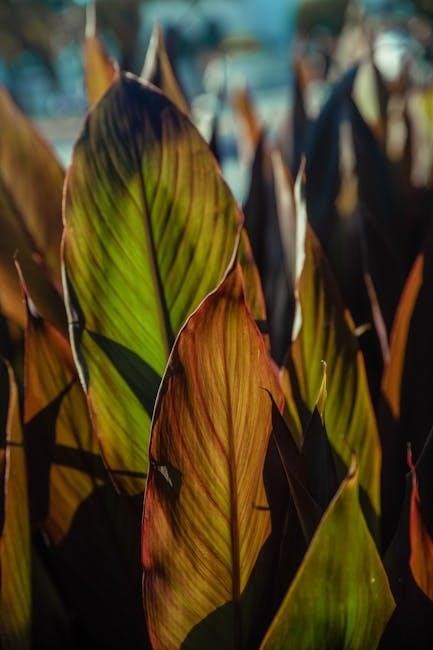
April Gardening in Southern California
April is a peak time for spring growth in Southern California. Focus on managing blooming plants, deadheading flowers, and watering efficiently to support vigorous plant development.
5.1 Managing Spring Growth and Blooms
April is ideal for nurturing spring growth and blooms in Southern California. Ensure plants receive adequate sunlight and nutrients. Deadhead flowers to encourage continuous blooming and maintain garden aesthetics. Prune overgrown branches to promote air circulation and healthy growth. Water deeply but avoid overwatering, as spring showers may provide natural moisture. Fertilize blooming plants with a balanced fertilizer to enhance flower production. Keep an eye out for pests like aphids and caterpillars, using organic or integrated pest management strategies to protect your garden.
5.2 Tips for Watering in the Spring Season
Spring watering in Southern California requires balance due to warmer temperatures and increased plant activity. Check soil moisture regularly, watering deeply when the top few inches feel dry. Avoid frequent shallow watering, as it can lead to weak root systems. Use drip irrigation or soaker hoses to minimize evaporation and runoff. Mulch around plants to retain soil moisture and reduce water loss. Water early in the morning to prevent overnight moisture buildup, which can foster pests and diseases. Adjust watering schedules based on rainfall and seasonal weather patterns.

May Gardening in Southern California
May is ideal for planting warm-season vegetables like tomatoes and peppers. It’s also a great time to care for succulents and drought-tolerant plants. Mulch and water efficiently to conserve resources and maintain soil health.
6.1 Planting Warm-Season Vegetables
May is the perfect time to plant warm-season vegetables in Southern California. Tomatoes, peppers, zucchini, corn, and eggplants thrive in the region’s mild spring weather. Choose varieties suited to the local Mediterranean climate. Prepare soil with organic matter for better drainage and fertility. Plant seedlings or seeds in well-spaced rows to ensure proper air circulation. Water deeply but avoid overwatering, which can lead to root rot. Mulch around plants to retain moisture and suppress weeds. Regular feeding with a balanced fertilizer will promote healthy growth and abundant harvests throughout the season.
6.2 Caring for Succulents and Drought-Tolerant Plants
May is an ideal time to focus on succulents and drought-tolerant plants in Southern California. These plants thrive in the region’s dry climate but still benefit from occasional watering. Ensure soil drains well to prevent root rot, and avoid overwatering. Provide full sun to partial shade, depending on the species. Fertilize lightly during the growing season to promote vibrant colors and healthy growth. Prune leggy stems to maintain shape and encourage new growth. Repotting may be necessary if plants outgrow their containers. Mulch around the base to retain moisture and suppress weeds, ensuring optimal conditions for these resilient plants.
June Gardening in Southern California
June marks the start of summer in Southern California, with warm weather and longer days. Focus on water conservation, maintaining healthy plant growth, and managing pests effectively.
7.1 Preparing for Summer Heat
Summer heat in Southern California demands proactive measures to protect your garden. Water plants deeply but infrequently to encourage deep root growth, and apply a thick layer of mulch to retain soil moisture. Fertilize plants with a balanced formula to promote healthy growth during the heat. Consider using shade cloth to protect sensitive plants from intense sunlight, especially during peak afternoon hours. Regularly inspect irrigation systems to ensure efficiency, and plan for consistent care to help your garden thrive through the warmest months.
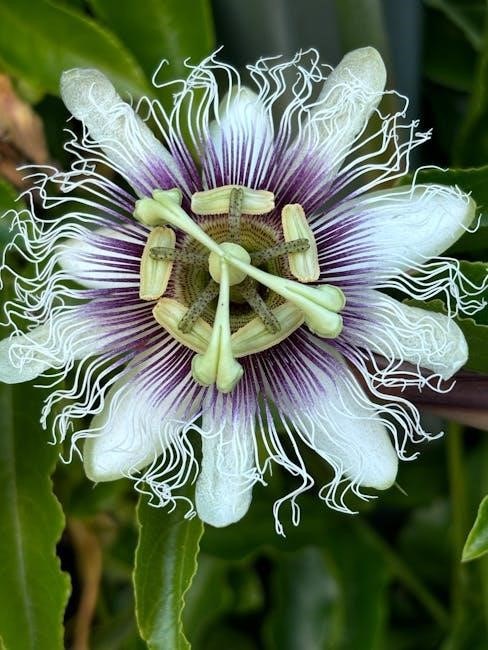
7.2 Managing Pests and Diseases in Early Summer
Early summer in Southern California brings increased pest and disease activity due to warmer temperatures. Regularly inspect plants for signs of aphids, whiteflies, and spider mites. Treat infestations promptly with organic solutions like neem oil or insecticidal soap. Fungal diseases, such as powdery mildew, thrive in heat and humidity. Improve air circulation by pruning overcrowded areas and avoid overhead watering. Apply fungicides if necessary and maintain soil health to strengthen plant resilience. Monitor for root rot from overwatering, ensuring proper drainage. Encourage beneficial insects like ladybugs and lacewings to naturally control pests.
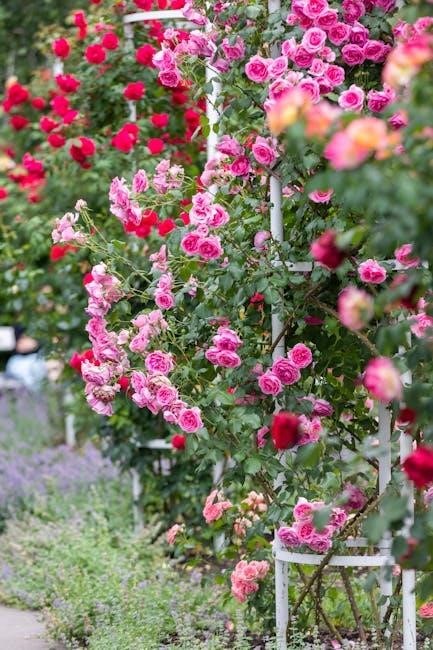
July Gardening in Southern California
July is a critical month for water conservation and maintaining fruit trees. Focus on efficient irrigation and regular fruit tree care to ensure a healthy harvest and landscape.
8.1 Water Conservation Techniques
In July, water conservation is essential due to high temperatures. Use drought-tolerant plants, mulch to retain moisture, and drip irrigation for efficiency. Install rain barrels to collect rainwater for non-potable uses. Avoid overwatering by checking soil moisture and watering deeply but infrequently. Early morning watering reduces evaporation. Consider using smart irrigation controllers that adjust based on weather conditions. These techniques help reduce water usage while maintaining healthy plants and adhering to local water restrictions.
8.2 Maintaining Fruit Trees in Summer
Summer is crucial for fruit tree health in Southern California. Ensure regular watering, especially during heatwaves, but avoid overwatering to prevent root rot. Fertilize lightly with a balanced formula to promote fruit development. Mulch around the base to retain moisture and suppress weeds. Monitor for pests like aphids and scale, treating promptly with organic or chemical controls. Thin fruit to prevent overloading branches and ensure proper airflow. Regular inspections and timely care will help your trees thrive and produce a bountiful harvest.

August Gardening in Southern California
August is a time of abundance, with summer crops ready for harvest. Focus on consistent watering, monitoring fruit trees, and planning for fall planting to maintain garden productivity.
9.1 Harvesting Summer Crops
In August, Southern California gardens are at their peak, with tomatoes, peppers, and stone fruits ready for harvest. Regularly check crops for ripeness to avoid over-ripening, and use sharp tools for clean cuts. Harvest tomatoes when fully colored, peppers at desired size, and stone fruits like peaches and nectarines when slightly soft. Keep track of harvest frequency to avoid missing any produce. Proper harvesting techniques ensure continued plant health and encourage further production throughout the season.
9.2 Planning for Fall Planting
As summer winds down, August is the perfect time to plan for fall planting in Southern California. Review your garden’s performance from the past season to identify areas for improvement. Begin enriching the soil with compost or well-rotted manure to prepare for cooler-weather crops. Make a list of vegetables, such as broccoli, kale, and carrots, that thrive in fall. Order seeds and organize planting tools. Create a planting schedule based on frost dates and crop maturity times. Proper planning now ensures a successful and productive fall garden.
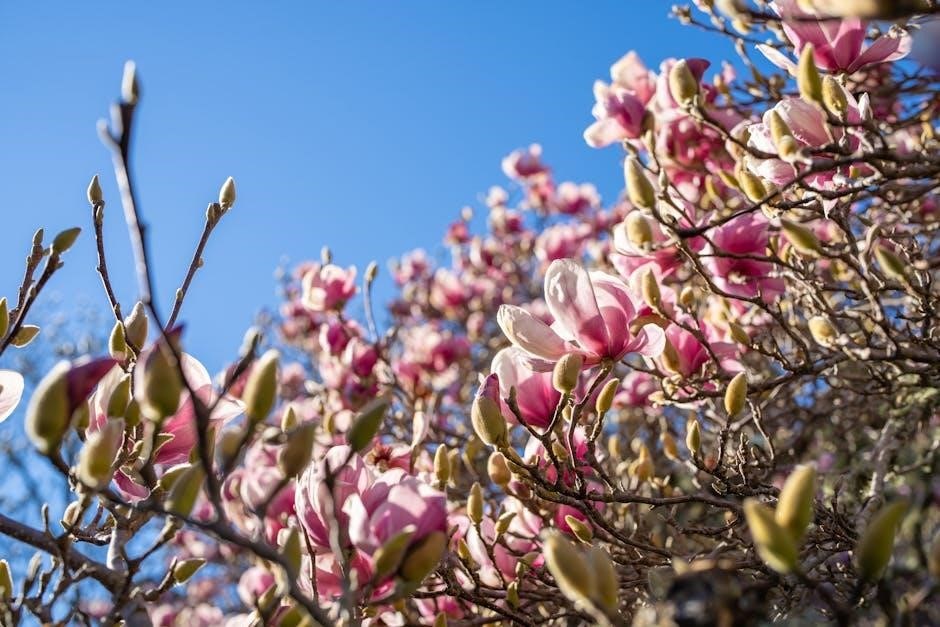
September Gardening in Southern California
September marks the transition from summer to fall in Southern California. Mild weather and longer nights signal the start of preparing for the cooler growing season.
10.1 Planting Cool-Season Vegetables

In Southern California, September is an excellent time to plant cool-season vegetables like broccoli, kale, spinach, and carrots. These crops thrive in the mild, cooler weather of fall. Prepare the soil by adding organic compost to improve fertility and drainage. Sow seeds or seedlings spaced appropriately for mature growth. Ensure they receive sufficient sunlight and water consistently. These vegetables will mature as the weather cools, providing a fresh harvest during the fall and early winter months. Proper care now ensures a bountiful and healthy yield later.
10.2 Preparing for Fall Blooms
Preparing for fall blooms in Southern California involves selecting cool-season flowers like marigolds, violas, and pansies. Deadhead spent flowers to encourage new growth and fertilize with a balanced mix. Prune back perennials such as asters or chrysanthemums to refresh them for blooming. Plant bulbs like ranunculuses or tulips, which thrive in cooler weather. Ensure soil is well-draining and enriched with organic matter. Water deeply but less frequently to promote root strength. These steps will help your garden burst with vibrant colors as fall arrives, attracting pollinators and enhancing your outdoor space.
October Gardening in Southern California
October is ideal for planting spring bulbs and cool-season crops. Manage fall foliage, clean up gardens, and prepare for winter. Plant bulbs like tulips and daffodils.
11.1 Managing Fall Foliage and Clean-Up
October is a great time to manage fall foliage and clean up your garden. Rake leaves regularly to prevent disease and pests, and compost healthy foliage. Protect plants from frost by mulching around sensitive species. Clean up garden beds by removing dead or dying plants, which can harbor pests. Prune back perennials and add organic matter to improve soil health. Proper fall clean-up ensures a healthy start for winter and spring plantings. Plant spring bulbs like tulips and daffodils during this time for vibrant blooms next year.
11.2 Planting Bulbs for Spring
In October, Southern California gardeners can plant spring-flowering bulbs like daffodils, tulips, and grape hyacinths. Choose bulbs suited to the region’s Mediterranean climate. Plant in well-draining soil with full sun to partial shade. Dig holes 2-3 times the bulb’s height, place bulbs pointed upward, and cover with soil. Water thoroughly after planting. For tulips, consider pre-chilling in the refrigerator for 6-8 weeks before planting. Add a balanced fertilizer in early spring for vibrant blooms. This ensures a colorful and thriving garden come springtime.
November Gardening in Southern California
November is ideal for planting winter vegetables like kale and spinach. Prepare soil by adding compost, rake leaves, and inspect irrigation systems. Cooler weather promotes healthy root growth.
12.1 Preparing Your Garden for Winter
As fall transitions to winter, clean up your garden by removing dead plants and leaves. Protect sensitive plants from frost using mulch or covers. Plant winter crops like kale and spinach. Inspect and repair irrigation systems, and adjust watering schedules for drier winter air. Fertilize lightly to prepare soil for spring growth. Divide and replant perennials if needed, and prune dormant shrubs to maintain shape. Ensure proper drainage to prevent root rot during rainy months. These steps will help your garden thrive during the cooler season.
12.2 Planting Winter Vegetables and Flowers
Winter is an ideal time to plant cool-season crops in Southern California. Vegetables like broccoli, kale, spinach, and carrots thrive in the cooler weather. Flowers such as pansies, violas, and snapdragons add vibrant color to gardens during winter. Choose varieties suited to your specific climate zone. Plant seeds or seedlings in well-prepared soil with adequate spacing. Ensure proper sunlight and watering, adjusting for cooler temperatures. Fertilize lightly to promote healthy growth. These plants will bloom or mature by spring, providing a beautiful and productive garden throughout the season;
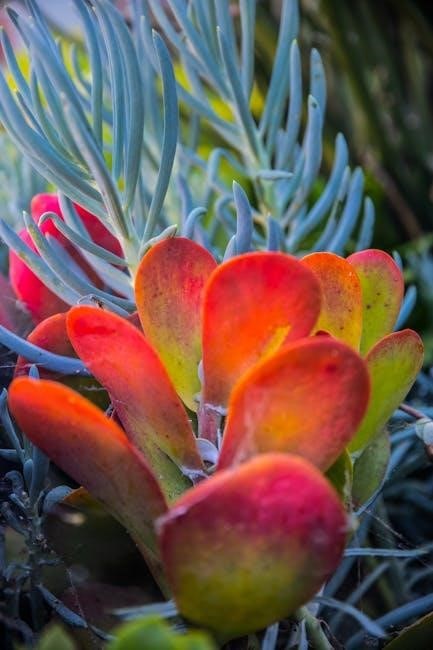
December Gardening in Southern California
December is a great time to plant cool-season crops like spinach and kale. Prune dormant trees and shrubs, and decorate with festive plants like poinsettias and holly.
13.1 Winter Pruning and Maintenance
December is ideal for pruning deciduous trees, shrubs, and dormant perennials. Remove dead, diseased, or damaged branches to promote healthy growth. Use sharp tools to make clean cuts, and protect sensitive plants from frost using mulch or covers. This is also a good time to tidy up garden beds and prepare soil for spring planting. Regular maintenance ensures your garden remains vibrant and thrives during the cooler months.
13.2 Holiday Gardening Tips and Decorations
December is a great time to add festive touches to your garden. Use evergreen branches, holly, and poinsettias for holiday decorations. Create wreaths or garlands using seasonal plants and flowers. Consider gifting potted plants like cyclamen or rosemary. Protect sensitive plants from cooler nights with mulch or covers. Add twinkling lights to highlight your garden’s winter beauty. This season is also perfect for planning next year’s garden while enjoying the festive ambiance. Make the most of Southern California’s mild winter to keep your garden thriving and visually appealing during the holidays.
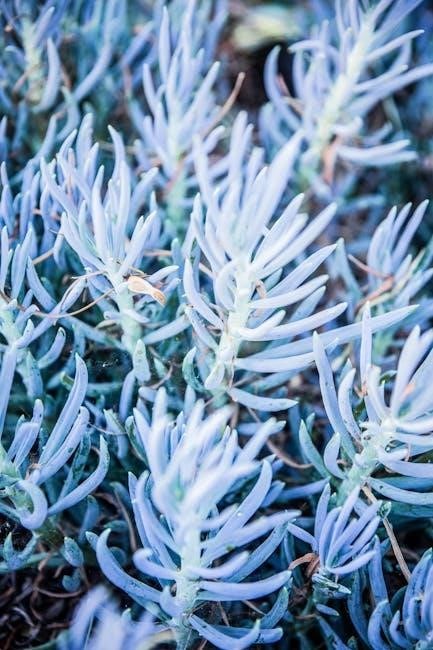
Year-Round Gardening Tips
Maintain soil health with organic matter, water efficiently, and monitor for pests. Plan ahead for each season and adapt to Southern California’s Mediterranean climate conditions.
14.1 Soil Health and Fertilization
Maintaining healthy soil is crucial for thriving plants. Incorporate organic matter like compost or manure to improve soil structure and fertility. Fertilize seasonally, using balanced formulas during growing seasons and organic options for long-term health; Southern California’s climate benefits from drought-resistant soil amendments. Regularly test soil pH and adjust as needed. Mulching retains moisture and suppresses weeds, while crop rotation prevents nutrient depletion. Healthy soil promotes robust root systems, ensuring vibrant blooms and abundant harvests year-round.
14.2 Integrated Pest Management (IPM) Strategies
IPM combines physical, cultural, biological, and chemical controls to manage pests effectively. Start with prevention by planting pest-resistant varieties and maintaining healthy plants. Use barriers like fine mesh to protect crops from insects. Encourage beneficial insects, such as ladybugs and lacewings, to control pests naturally. Monitor for early signs of infestation and treat with targeted methods. Chemical pesticides should be a last resort, applied judiciously to avoid harming beneficial organisms. Regularly inspect plants and adjust strategies seasonally to address specific pest threats in Southern California’s diverse gardening conditions.
Southern California’s diverse climate allows year-round gardening success. With proper planning and care, gardeners can thrive, enjoying bountiful harvests and vibrant blooms every season.
15.1 Summary of Key Gardening Practices
Successful Southern California gardening hinges on adapting to the Mediterranean climate. Plan seasonally, prioritize soil health, and conserve water. Regular pruning, mulching, and integrated pest management are essential. Timing planting according to temperature and rainfall ensures optimal growth. Monitor for pests and diseases, and fertilize appropriately. By following these practices, gardeners can maximize yields and enjoy vibrant, thriving gardens year-round, leveraging the region’s unique conditions for diverse and bountiful harvests.
15.2 Encouragement for Year-Round Gardening
Gardening in Southern California offers endless opportunities to grow a variety of plants. With its mild climate, every month presents a chance to cultivate something new. Whether it’s vibrant flowers, delicious vegetables, or lush greenery, the region’s conditions invite creativity and experimentation. Embrace the joy of nurturing your garden, watching it flourish, and reaping the rewards of fresh produce and beauty. Year-round gardening is not only rewarding but also a sustainable way to connect with nature and enhance your outdoor space.